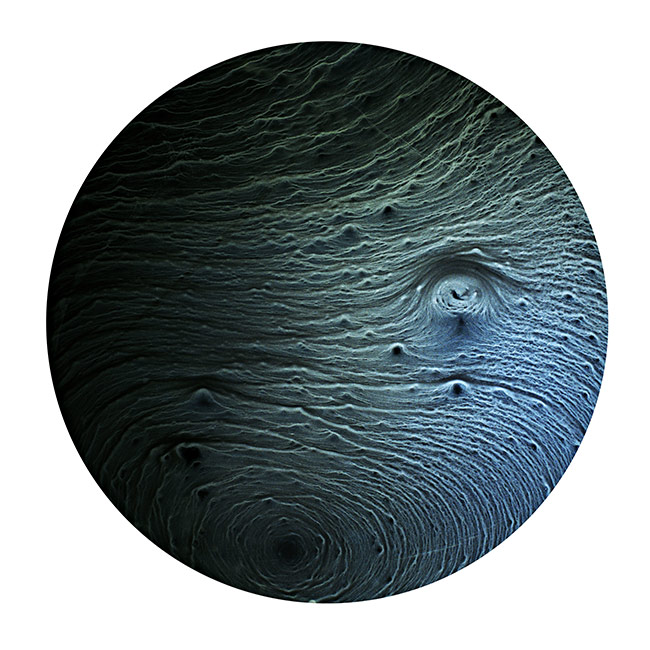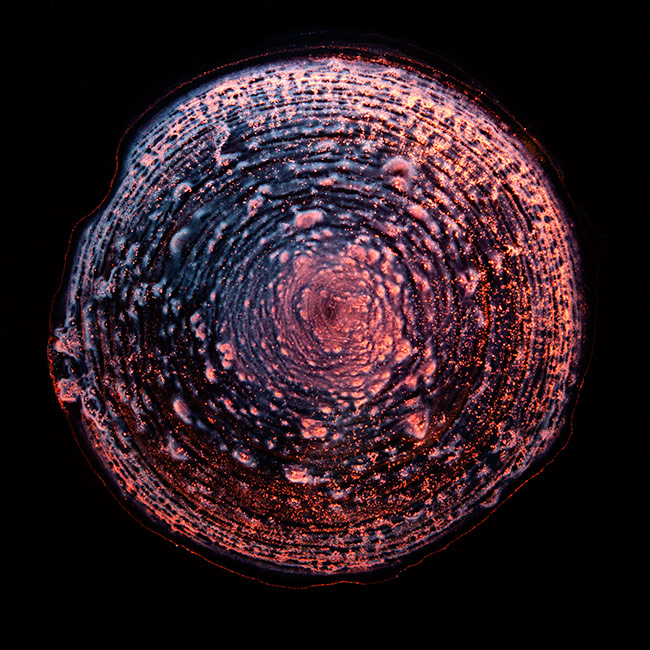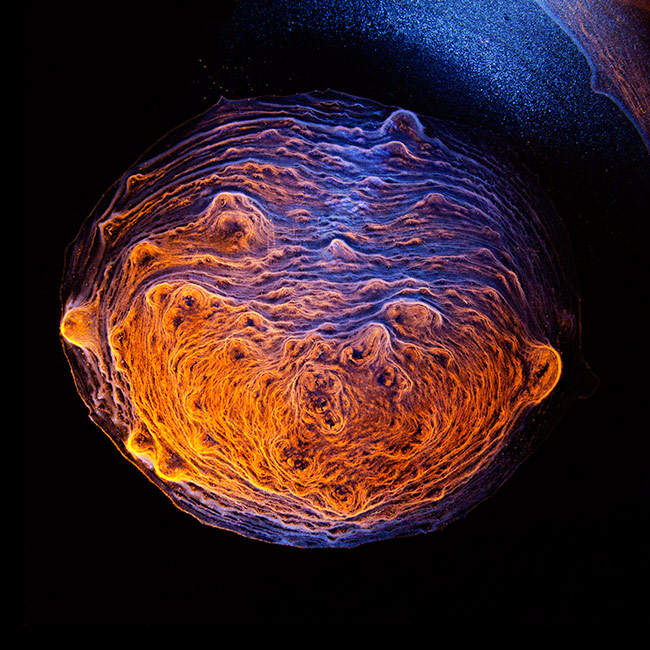http://www.sciencealert.com/whisky-crea ... his-is-why
The pictures
http://erniebutton.com/?portfolio=vanis ... alt-scotch
Dried Whisky
- Capn Jimbo
- Rum Evangelisti and Compleat Idiot
- Posts: 3551
- Joined: Mon Dec 11, 2006 3:53 pm
- Location: Paradise: Fort Lauderdale of course...
- Contact:
Great post!
Great find. The story behind these photos is fascinating (see da'rum's links above). Ever leave your dramming glass overnight without cleaning it. The aroma left behind is often very interesting, but in this case a artistic photographer thought he noted a faint pattern left behind by the dried whisky and decided to photograph it using the proper lighting. The results were fascinating...
. . . . . . . (Dalwinnie)
(Dalwinnie)
. . . . . . . (Lagavulin)
(Lagavulin)
. . . . . . . (Ardbeg)
(Ardbeg)
These patterns are due to something apparently called the "Marangoni Effect" which the article states was discovered in the 19th century. This is like the "chasing the serpent" effect noted by tasters who added a few drops of water to their dram, and noted swirling, writhing patterns. Both effects are reportedly due to the difference in surface tension between water and alcohol, with each having different attractions to one another and to other components in the whisky.
But now the interesting part.
He noted that each brand had its own unique pattern. With this in mind he contacted a scientist friend at Princeton University who studied the matter. The results were equally interesting. Various mixtures of alcohol and water didn't produce these patterns. It was only when they added some polymers to the solution that patterns began to emerge. Their conclusion:
Of course the notion that "additives" cause these patterns got my attention! And yours too, I'd guess, but I believe that these whiskies are pure and unadulterated. My observation is that these tests didn't include new make. Had they done so they might have noted that the clear new make - like their "fake" whisky - also might not have made patterns. If so, the conclusion might well have been that it was the new components added by wood aging and interactions was the cause of the patterns.
Thoughts?
Great find. The story behind these photos is fascinating (see da'rum's links above). Ever leave your dramming glass overnight without cleaning it. The aroma left behind is often very interesting, but in this case a artistic photographer thought he noted a faint pattern left behind by the dried whisky and decided to photograph it using the proper lighting. The results were fascinating...
. . . . . . .
 (Dalwinnie)
(Dalwinnie). . . . . . .
 (Lagavulin)
(Lagavulin). . . . . . .
 (Ardbeg)
(Ardbeg)These patterns are due to something apparently called the "Marangoni Effect" which the article states was discovered in the 19th century. This is like the "chasing the serpent" effect noted by tasters who added a few drops of water to their dram, and noted swirling, writhing patterns. Both effects are reportedly due to the difference in surface tension between water and alcohol, with each having different attractions to one another and to other components in the whisky.
But now the interesting part.
He noted that each brand had its own unique pattern. With this in mind he contacted a scientist friend at Princeton University who studied the matter. The results were equally interesting. Various mixtures of alcohol and water didn't produce these patterns. It was only when they added some polymers to the solution that patterns began to emerge. Their conclusion:
(Emphasis added)"To work it out, the team compared the drying of real whisky to a mixture of alcohol and water that mimicked the composition of whisky (around 40 percent ethanol, 60 percent water). They found that while the fake whisky followed the Marangoni effect and produced clean rings as it dried, the real whisky didn’t.
They then experimented with their fake whisky by adding a soap-like compound, which still didn’t produce the same patterns as real whisky. Finally, they tried adding a polymer to the mix, and at last the fake whisky started to act like the real drink.
This means, Stone's team believes, that it’s the small amounts of additives that each whisky distillery adds in differing amounts that controls the patterns at the bottom of the glass - not alcohol content or age."
Of course the notion that "additives" cause these patterns got my attention! And yours too, I'd guess, but I believe that these whiskies are pure and unadulterated. My observation is that these tests didn't include new make. Had they done so they might have noted that the clear new make - like their "fake" whisky - also might not have made patterns. If so, the conclusion might well have been that it was the new components added by wood aging and interactions was the cause of the patterns.
Thoughts?
